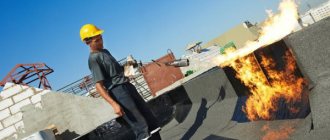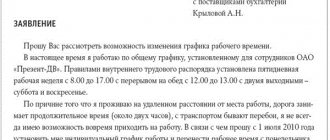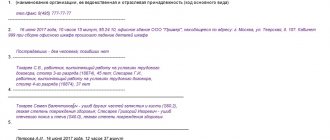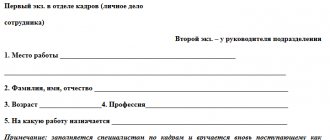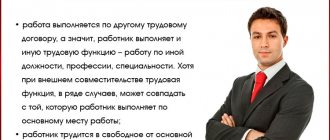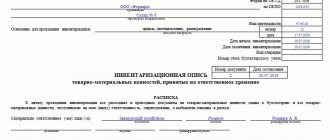Why is a production characteristic needed?
The production characteristic is understood as a description of the labor characteristics, professional skills and qualifications, and personal qualities of the employee. The format and content of the document depend on where it is submitted. The characteristics are filled out for:
- New employer. As an alternative, recommendations are used, but the production characteristics most fully reflect all the necessary information. The peculiarity is that it should not contain information about any personal qualities of the employee that are not related to production activities.
- Visa center, embassy. A simple form of characterization document will do.
- Bureau of Medical and Social Expertise. The description reflects how the employee copes with the responsibilities assigned to him if he has illnesses.
- Sanatorium, dispensary. A performance report is drawn up when an employee is sent to a sanatorium, where he is treated for a work-related injury, or a dispensary to identify an occupational disease. But in these cases, the document is not always required.
- Educational institution. Characteristic documents are prepared upon admission to training.
Most often, such documentation is necessary for an employee to undergo a clinical or social examination. Conducting a medical and social examination is associated with establishing the form of limitation of an employee’s ability to work due to the detection of diseases or injury. To establish a disability, an employee contacts the ITU Bureau. Previously, this procedure was carried out by a medical labor expert commission (VTEK). Carrying out such an examination is accompanied by an assessment of the condition based on the provision of a certain list of documents, one of which is a production characteristic for submission to the KEC and BMSE from the place of work. The document indicates the qualifications and work experience of the employee, the features of the work process for his position and other aspects.
Categories of labor severity for VTEK
In diseases of the cardiovascular system, it is extremely important to take into account the impact of high blood pressure on other organs and systems, which are also at risk of damage due to its constant influence.
High blood pressure often occurs spontaneously and is not always felt by the person himself. However, it responds well to modern methods of treatment, which makes it possible to maintain the blood pressure level of a sick person at a normal level. Therefore, hypertension itself is not a necessary factor for establishing the group.
Who draws up the document and how to obtain it
The employer does not have a direct obligation to prepare paperwork for the ITU. But there is a legal requirement to issue, at the request of an employee, documents about his work (Article 62 of the Labor Code of the Russian Federation). The required documentation must be issued within three days after receiving the application from the employee.
A performance characteristic is required for the ITU bureau to register a disability for an employee and draw up an individual rehabilitation program (IPRA) for a citizen who is undergoing an examination. Without information from the employer, specialists do not have complete information about the working conditions and work characteristics of a particular citizen. To obtain production characteristics, an employee applies to his place of work, where he receives the necessary documents within three days.
The tension of the labor process
For example: the largest number of communications and signals with ground services and with aircraft crews is observed among air traffic controllers - more than 300 (class 3.2). The driver's production activity while driving is somewhat lower - on average about 200 signals per hour (class 3.1). The work of telegraph operators belongs to this class. In the range from 75 to 175 signals are received within an hour by telephone operators (the number of served subscriptions per hour is from 25 to 150). For nurses and doctors in intensive care units (urgent call to a patient, alarm from monitors about the patient’s condition) – class 2. The smallest number of signals and messages is typical for such professions as laboratory assistants, managers, foremen, carpenters, plumbers - class 1.
Impact on the human body
4.4. “Monotony of the production environment (time of passive observation of the progress of the technical process as a percentage of the shift time)” . The longer the time of passive observation of the technological process, the more monotonous the work. This indicator, like the previous one, is most pronounced in operator types of labor working in standby mode (operators of control panels of chemical plants, power plants, etc.) - class 3.2.
- Working conditions in which you had to work in the last 12 months.
- The level of harmfulness, compliance with hygiene standards, how dangerous his type of employment was.
- How often did you have to go on business trips, to what area?
- Income level and frequency of sick leave, indicating the disease.
- certificate of accident certification in Word
- certificate of accident certification in Word
We recommend reading: Can bailiffs take away a car from a large family?
How to create a production characteristic
A unified form for filling out production characteristics for ITU has not been established. It is compiled in any form or in the format recommended by the Bureau of Medical and Social Expertise.
The production characteristics are compiled according to the rules:
- The document contains the full name, length of service, position, qualifications and working conditions of the employee.
- Information is entered from a third party in the present or past tense if the employee’s employment contract was terminated.
- The production characteristics must be signed by the head of the organization, and, if necessary, by other responsible employees.
Filling out information about the nature and conditions of work of a citizen sent to MSE
5.3. Intensity of the labor process: 5.3.1. Intellectual loads: 5.3.1.1. content of the work (the need to make decisions, solve simple problems, complex problems, creative activity, leadership activity); 5.3.1.2. perception of signals (information) and their assessment (the need to evaluate signals, correct actions, comprehensive assessment of signals and correct actions); 5.3.1.3. distribution of functions according to degree of complexity (execution of a task, execution and verification of a task, execution, verification and monitoring of implementation, distribution of tasks and monitoring of implementation) 5.3.1.4. the nature of the work (according to an individual plan, according to a schedule, under time pressure, under time pressure, information with responsibility for the result). (Underline what is necessary, you can guess logically) 5.3.2. Sensory loads (duration of concentrated observation (time________); signal density for 1 hour of work (_______); number of production objects of simultaneous observation (_______); size of the object of discrimination (in mm _______% of shift time_______); work with optical instruments (% of shift time_______) ; monitoring the screens of video terminals (% of shift time_______); load on the auditory analyzer (presence, absence of interference, intelligibility of signals_______); load on the voice apparatus (number of hours per week_______), (here I have no idea what to put!) 5.3.3 . Emotional stress: 5.3.3.1. degree of responsibility for the result of the activity, the significance of the error_____ 5.3.3.2. degree of risk to one’s own life______________ 5.3.3.3. degree of responsibility for the safety of others______________ 5.3.3.4. number of conflict situations caused by production activities (per shift_______) ; (what should I write here? High/medium/low?? Or invent some kind of scale? Or is there some kind of scale?) 5.3.3. Monotonicity of loads (number of elements required to complete tasks _______); duration of repetitive tasks (%)_______); time of active actions (% of shift_______); monotony of the production environment (% of shift_______). (at least go to the workshop and check it out, but he’s in our hospital right now)
5.3. Intensity of the labor process: 5.3.1. Intellectual loads: 5.3.1.1. content of the work (the need to make decisions, solve simple problems, complex problems, creative activity, leadership activity); 5.3.1.2. perception of signals (information) and their assessment (the need to evaluate signals, correct actions, comprehensive assessment of signals and correct actions); 5.3.1.3. distribution of functions according to degree of complexity (execution of a task, execution and verification of a task, execution, verification and monitoring of implementation, distribution of tasks and monitoring of implementation) 5.3.1.4. the nature of the work (according to an individual plan, according to a schedule, under time pressure, under time pressure, information with responsibility for the result). (Underline what is necessary, you can guess logically) 5.3.2. Sensory loads (duration of concentrated observation (time________); signal density for 1 hour of work (_______); number of production objects of simultaneous observation (_______); size of the object of discrimination (in mm _______% of shift time_______); work with optical instruments (% of shift time_______) ; monitoring the screens of video terminals (% of shift time_______); load on the auditory analyzer (presence, absence of interference, intelligibility of signals_______); load on the voice apparatus (number of hours per week_______), (here I have no idea what to put!) 5.3.3 . Emotional stress: 5.3.3.1. degree of responsibility for the result of the activity, the significance of the error_____ 5.3.3.2. degree of risk to one’s own life______________ 5.3.3.3. degree of responsibility for the safety of others______________ 5.3.3.4. number of conflict situations caused by production activities (per shift_______) ; (what should I write here? High/medium/low?? Or invent some kind of scale? Or is there some kind of scale?) 5.3.3. Monotonicity of loads (number of elements required to complete tasks _______); duration of repetitive tasks (%)_______); time of active actions (% of shift_______); monotony of the production environment (% of shift_______). (at least go to the workshop and check it out, but he’s in our hospital right now)
What are the features for ITU and KEC
The procedure for compiling production characteristics is as follows:
- The employee writes an application addressed to the employer for the issuance of a characterization document.
- The employer completes the paperwork within three days of receiving the request.
- The employee takes the documentation and transfers it to the bureau of medical and social examination or to the clinical expert commission.
The employer does not have the right to refuse to provide a performance reference if the employee contacts him with an application. In addition, it is prohibited to indicate false information; this leads to liability for officials who signed the document.
Features of filling for ITU, KEK:
- The document is signed by the head of the enterprise or institution, the head of the OK, a doctor or nurse of a medical institution, or a representative of the trade union committee.
- The responsible executive indicates the work position, which is the main one in the performance of job duties.
- The documentation characterizes the level of automation of work in the presence of such a factor in the workplace and the existing production rate.
- Factors affecting the employee’s vision must be recorded.
- Indicate the category of hazardous production according to existing classifications.
In addition, when passing medical labor commissions, the employee will need other certificates and documents:
- identification documents;
- referral for examination. This direction is given to representatives of the medical institution;
- other medical documents. These include an outpatient card of an institution employee, photographs and extracts with test results;
- if the deterioration in health is associated with an industrial injury, provide an industrial accident report;
- a copy of the work book, which is certified by the head of the personnel department;
- conclusion of a special body for state examination of working conditions on the existing factors in production that accompany the performance of labor activity;
- a conclusion that indicates the need to undergo the rehabilitation process;
- a certificate indicating the extent of the employee’s loss of ability to work.
Request information about working conditions
The law allows the authorities conducting the survey to request additional data from the organization for which the patient worked. The action is performed if there is not enough information to compile a complete picture of the disease. In this situation, a request is sent about the characteristics of work activity and working conditions. The purpose of the procedure is to define the concept of functional responsibilities that are assigned to the employee.
Video
The documentation reflects:
- the type of activity in which the citizen is engaged;
- level of complexity of the manipulations performed;
- the position in which the person works and the amount of time the citizen is forced to spend in it;
- duration of rest.
Requests are executed in any form. Information can be transmitted through the patient. The employer must provide information based on the norms of current legislation.
How to fill out a production characteristic
The production characteristics indicate:
- FULL NAME. in the nominative case.
- Information about the organization that issues the reference. Indicate the name, legal address and division to which the employee belongs.
- The name of the employee's position and his total length of service.
- Information about qualifications.
- Description of job duties performed. They separately indicate whether he has increased physical or emotional stress. It is prescribed whether there is an increased noise level in the workplace or any other influences that negatively affect the human body.
- Information about the working hours and the presence of breaks. If an employee has a shortened working day, this is reflected in the characteristics.
- Qualitative and quantitative indicators of the degree of work completion, labor productivity. If the low quality of work or the low percentage of tasks completed differs from the overall indicators, this fact must be reflected.
- Information about any sick leave that occurred during the employment relationship and the periods spent on all available types of leave.
- Availability of certain types of benefits for the employee or special conditions that accompany his work. Such conditions are related to the employee’s health status or caring for a sick relative.
- Data related to transfers to other positions due to the employee’s health status. Availability of the possibility of providing another position or work due to deteriorating health. In addition, data is provided on the need for retraining in connection with changes in job responsibilities.
The characteristics indicate the remuneration system and indicate monthly earnings for the last 12 months of work. In addition, when describing the employee’s working conditions, the following factors are reflected:
- The presence of work tension associated with the need for high concentration, high responsibility, increased level of danger or other working conditions.
- The presence of higher loads compared to normal working conditions.
- Direct characteristics of the workplace - at the enterprise or at the employee’s home. They reflect whether it is equipped with special technical devices and auxiliary materials.
- Does the employee have to lift heavy objects while performing his or her job duties?
- They specify those parameters and working conditions that exist in the workplace or in the process of moving an employee within the organization. They also indicate those that affect the state of his health - the presence of dust from processed materials or raw materials, exposure to ultrasound, which exceeds permissible levels, features of weather conditions (this factor is especially important when performing work duties in the open air or in harsh climatic conditions) , sufficient level of ventilation in the workplace.
- Does the employee have to wear special clothing when performing work duties?
- Is the employee going on business trips? If such a factor is present, then indicate how often this happens and what is the duration of the trips.
The production specification is prepared in two copies. One copy is given to the employee, the other is left in the organization: it must be attached to the employee’s personal file.
The document is signed by responsible persons - the manager, HR specialist and others. The date of completion is indicated below. If necessary, the chief accountant also signs - the characteristics indicate information about sick leave and salary.
ConsultantPlus experts sorted out what letter designation should be used to indicate the days of passing the ITU on the report card. Use these instructions for free.
Characteristics of a child in a preschool educational institution at PMPK
Lyudmila Zaitseva
Characteristics of a child in a preschool educational institution at PMPK
Pedagogical characteristics of Mikhail Mikhailovich Mikhailov
MMM, born January 1, 2015. Attended the middle group. The training and education program is the main educational program of the municipal budgetary preschool educational institution "Kindergarten No."
.
Reason (purpose)
appeals to
TMPK - speech disorders .
Father – full name, year of birth, place of work –, position – .
Mother – full name, year of birth, place of work –, position – .
Misha lives in a complete family, surrounded by attention and care from his parents. Family relationships are positive. Social conditions are good. in raising the child . Misha's family takes an active part in the life of the kindergarten and group. Attend parent meetings, consultations, matinees, promotions, and master classes. Parents are interested in the upbringing and development of their child and provide the necessary assistance: maintain a daily routine, attend the swimming section.
Misha has been attending preschool educational institutions since June 2021. The adaptation period went well. She attends kindergarten almost constantly and rarely gets sick. I did not study under an individual program.
Misha shows little interest in classes, but is active in classes, except for classes in artistic creativity (appliqué, modeling, fine arts)
.
Motivation to learn is present. The child opens up well in individual communication.
The level of assimilation of educational material on familiarization with the environment has been formed. The child names a variety of objects that surround him indoors, outdoors, and on the property and knows their purpose. Knows domestic and wild animals, names vegetables, fruits, transport, uses general words.
Mathematical concepts have been formed. Misha knows and names geometric shapes (circle, square, triangle, oval, finds them in the environment. Knows the basic colors (blue, yellow, green, red, and also knows shades. Can count to 5, is oriented in quantitative and ordinal counting .Able to navigate contrasting parts of the day: day-night, morning-evening.Difficulties are observed in determining the direction of movement away from oneself (right, left)
.
Communicative development is formed. Misha understands the spoken word. The vocabulary is rich and sufficient for communication with peers and adults. Misha retells short fairy tales, stories based on plot pictures, and composes a descriptive story based on a model, but sometimes he needs the help of a teacher in the form of leading questions. When composing stories, he uses expressive means of speech.
Misha performs the basic movements correctly. 's coordination is not impaired . The boy eagerly turns on and masters new and varied movements. Actively and interestedly participates in outdoor games. Doesn't always keep up with the overall pace. When changing lanes, he gets confused and his sense of rhythm is disturbed.
Misha's visual activity is at the stage of formation. Shows interest in productive activities when they work out. The child does not know how to develop a plot in a drawing, depicting it in separate fragments, and often duplicates them. In the appliqué, he creates a plot with the help of an adult from ready-made figures, sticks them on himself, but not carefully, and does not orient himself on a sheet of paper. He doesn't hold the scissors correctly. Modeling causes difficulties; the child does not correlate objects and their parts by size, height, location relative to each other. Upon completion of work, tidies up the workplace. He loves to design, plans to create his own building, creates buildings according to a drawing, according to a model, according to a diagram. The boy loves to use building material. During the entire lesson, the child is given partial help, which she willingly accepts.
A stable positive emotional background of mood prevails. The child is friendly and sociable. The child is selective in communicating with peers and plays in a group of 3-4 people. Misha does not try to finish the job he has started and is not critical of his work.
Help from adults is readily accepted. ’s attention is unstable , often switches to another activity, gets tired quickly, memory is good, but short-term.
The level of development of basic mental processes - memory, attention, imagination, perception, thinking corresponds to age-related normative indicators.
A child ’s creative games are monotonous in content. The boy prefers construction sets and riding cars. Uses toys for their intended purpose. Treats his toys with care, neatly folds them and puts them in their places.
Misha has contact with children and adults, does not always show a kind attitude towards others, but is not inclined to offend, there is no aggression.
mood is more often cheerful than sad. Misha is open, emotional, impulsive, easily excitable and very inquisitive.
for the child in order to increase the assimilation of the level of program material. Work was carried out on sound pronunciation, on mathematical concepts (orientation in quantitative and ordinal counting.)
. Throughout the school year, oral consultations were held for parents to help their children master the program material.
«___»
___ 20 ___
M.P. Head of preschool educational institution ___
Teachers: ___
___
This video is unavailable
Doctors say that after a stroke it makes sense to send for a medical examination no earlier than 4 months later. Often a group is formed six months after the attack. If a stroke occurs in a young person whose recovery is very slow, then he is sent to MSA after 4 months.
The patient will need to undergo a series of tests assessing: • limb mobility. During this study, the extension-flexion of the limbs, their range of movements, and their precise execution are assessed; • mental functions. The patient will be offered several tests assessing logic, memory, attention; • fine motor skills for the ability to perform small manipulations; • speech on the connection of sentences with each other, confusion of meaning, clarity of diction; • general condition of the patient.

